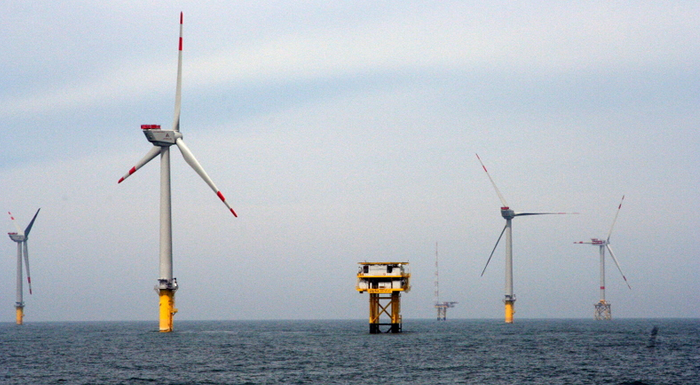How to reduce the weight and costs for offshore wind structures


The wind industry is expected to develop rapidly because of the need for clean energy. In doing so, the industry is looking for more efficient ways to produce more energy through conversion of wind force into electricity. To achieve this, offshore substations of the near future will be built further into the ocean and will be larger
Building strong structures might lead to heavy substations which might decrease the efficient operation of the substation where other heavy machinery might be present. Since floating substations are becoming more common, installing lightweight architectural compound is important. In this article I will describe how to reduce weight and costs for offshore wind platforms.
By operating the wind platforms kilometers away from the coastal area (offshore) one increases the energy efficiency exponentially since there are more frequent and stronger winds. Building larger substations increases the costs and the weight of the structure as a whole. In order to tackle this, innovative designs and materials need to be used in engineering a wind platform. Applying sandwich walls as the façade of the wind platform is currently a state of the are solution to weight reduction.
Reducing weight by sandwich wall systems
In comparison to conventional wall systems e.g. corrugated walls, applying sandwich panels will reduce the weight of the platform substantially. Sandwich panels are composed of an insulation core (which can either be foam or mineral wool) and two metal skins. Adhesive materials are used to connect the metal skins to the core. The core is generally made of a fire resistant material.
The lightweight structure of the sandwich wall system contributes to the efficient operation of the wind platform. Because of their lightweight composition, the sandwich panels can be transported and installed very quick and effectively.
Reducing costs by sandwich wall systems
Sandwich walls reduce costs on several aspects of the process such as engineering, manufacturing, transportation, installing and even maintaining. The quality of the system is still maintained, giving a cost price effective system. A state-of-art sandwich wall system has excellent weather and gastight properties, corrosion resistant properties, and a good sound reduction performance.
A reduction in costs means that the wind platforms can be made higher on a larger scale, which leads to generating more wind power.
Conclusion
The wind industry is evolving and innovating rapidly in order to make the operations as effective as possible, without increasing costs. Sandwich wall systems are an excellent solution to engineer a lightweight and cost-effective offshore substation. Through such innovations the renewable energy industry can keep on growing in order to provide the world with sustainable energy.






